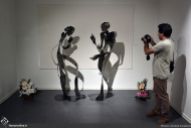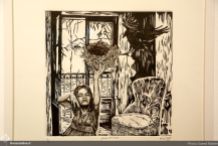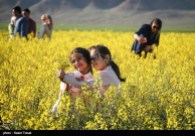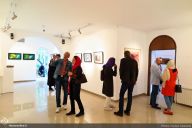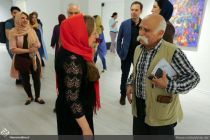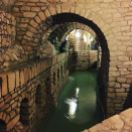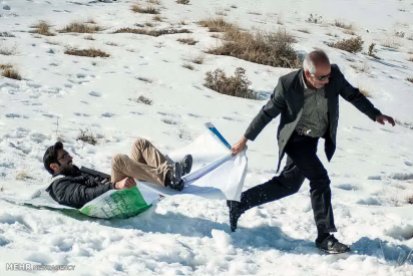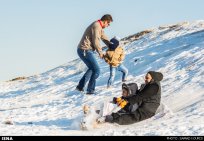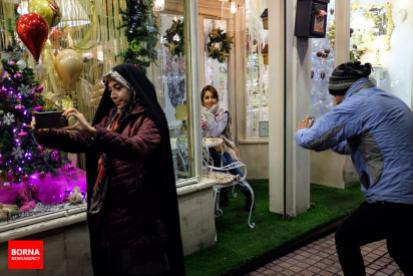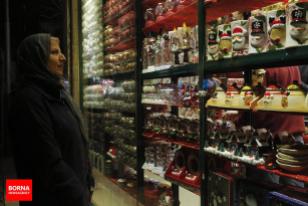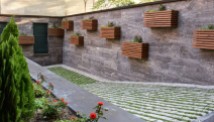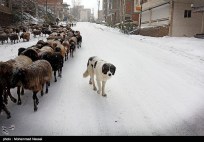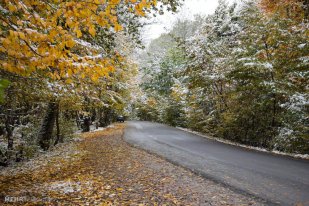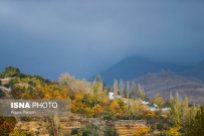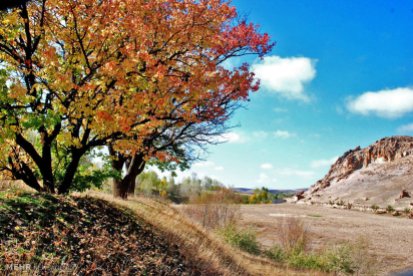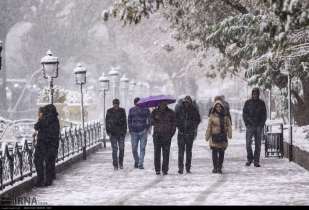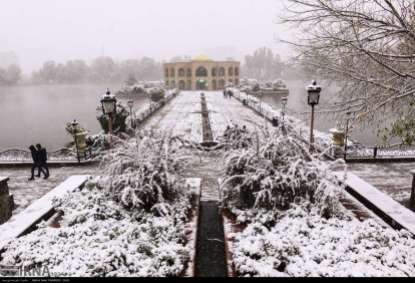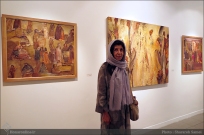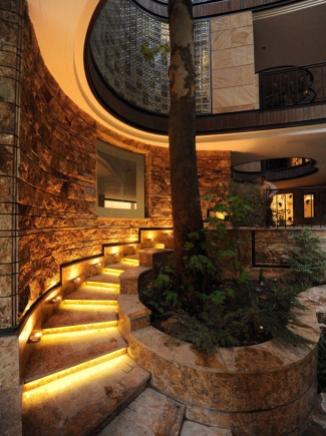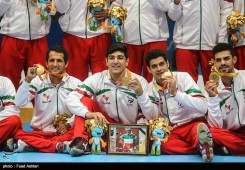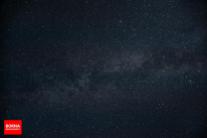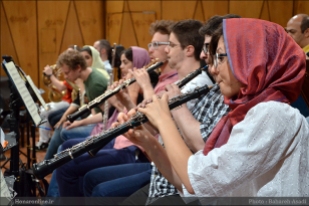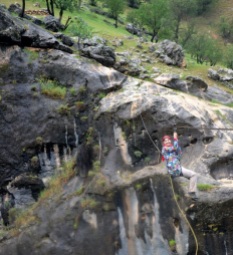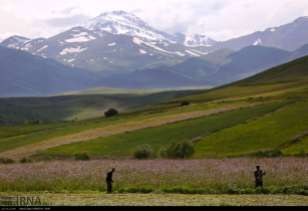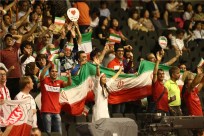Reza Ghoochannejhad – The violinist who understands seven languages
Reza scored the only Iranian goal in the World Cup 2014. Besides football, the forward is known for his skills with the violin and for languages; he speaks English, Dutch, Persian and French. Additionally he has a good understanding of German, Italian and Portuguese.
He played in the youth national team of the Netherlands and, at the age of 21, he wanted to leave football to study law. He was convinced by Marc Overmars, the winger that played in Barcelona, to stick to football. He wants to finish his studies when he retires from football. “The people who know me know that there is something more than football for me”. His sister-in-law is Sareh Bayat, a famous Iranian actress who participated in the 2012 Oscar-winning film “Nader and Simín, a separation”. After Iran’s win against Morocco with an own goal by Bouhaddouz, he took a moment to console his opponent on Instagram:
“I don’t know you personally but in life, sometimes you win, sometimes you lose. Don’t let this own goal bring you down. We are all professional sportsmen and this is a part of football. I am so happy and proud of my team and my country, but wanted to wish you also all the best in your career. Reza”.

Iranian, Egyptian, Brazilian and Spanish fans supporting their teams in St. Petersburg, Russia on the eve of the tournament (photo Mona Hoobehfekr, ISNA)
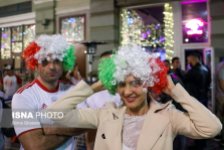
Iranian fans supporting their team in St. Petersburg, Russia on the eve of the tournament (photo Borna Ghasemi, ISNA)

Iranian fans supporting their team in St. Petersburg, Russia on the eve of the tournament (photo Mona Hoobehfekr, ISNA)

Iranian fans supporting their team in St. Petersburg, Russia on the eve of the tournament (photo Mona Hoobehfekr, ISNA)

Iranian fans supporting their team in St. Petersburg, Russia on the eve of the tournament (photo Borna Ghasemi, ISNA)

Iranian fans supporting their team in St. Petersburg, Russia on the eve of the tournament (photo Borna Ghasemi, ISNA)

Iranian fans at Kazan Arena before Iran vs Spain (photo Borna Ghasemi)

Iranian fans in Kazan Arena, Russia supporting their team during Iran vs Spain (photo Alex Livesey, Getty Images Europe)

Iranian fans in Kazan Arena, Russia supporting their team during Iran vs Spain (photo Borna Ghasemi, ISNA)

Iranian fans in Kazan Arena, Russia supporting their team during Iran vs Spain (photo Richard Heathcote, Getty Images Europe)

Iranian fans in St. Petersburg Stadium, Russia supporting their team during Morocco vs Iran (photo Borna Ghasemi, ISNA)

Iranian fans in St. Petersburg Stadium, Russia supporting their team during Morocco vs Iran (photo Borna Ghasemi, ISNA)

Iranian fans in St. Petersburg Stadium, Russia supporting their team during Morocco vs Iran (photo Borna Ghasemi, ISNA)

Iranian fans in St. Petersburg Stadium, Russia supporting their team during Morocco vs Iran (photo Alex Livesey, Getty Images Europe)

Iranian fans in St. Petersburg Stadium, Russia supporting their team during Morocco vs Iran (photo Richard Heathcote, Getty Images Europe)

Iranian fans watching Morocco vs. Iran in St. Petersburg, Russia (photo Borna Ghasemi, ISNA)

Iranian players celebrate their victory by throwing head coach Carlos Queiroz in the air after their match against Morocco in St. Petersburg Stadium, Russia (photo credit Mohammadreza Abbasi, MEHR)

Iranian players celebrating their victory after their match against Morocco in St. Petersburg Stadium, Russia (photo credit Mohammadreza Abbasi, MEHR)

Iranian players celebrating their victory after their match against Morocco in St. Petersburg Stadium, Russia (photo credit Mohammadreza Abbasi, MEHR)

Iranian players celebrating their victory in the locker room after their match against Morocco in St. Petersburg Stadium, Russia (photo credit FIFAWorldCupIRN, twitter.com)

Iranian players (from left to right) Amir Abedzadeh, Saman Ghoddos and Sardar Azmoun before boarding their flight to Russia (photo credit saman.ghoddos, instagram.com)

Iranian players Milad Mohammadi and Masoud Shojaei during their training camp in Turkey before the World Cup (photo miladmohammadi.official, instagram.com)

Iranian players during their training camp in Istanbul, Turkey before the World Cup (photo credit alirezajb_official, instagram.com)

Iranian players during their training camp in Russia before the World Cup (photo credit sardar_azmoun, instagram.com)

Iranian team on their way to Kazan for their match against Spain (photo credit teammellifootball, instagram.com)
Sardar Azmoun – The Iranian “Messi”
Sardar, 23 years old, is compared to the crack of Barça due to his ability. A comparison that, however, the striker of Rubin Kazan rejects immediately. “I do not know why they say I’m the new Messi, my game has nothing to do, maybe it’s because we use the same boots,” he says. Azmoun was born in Gonbad-e Kavus to a family of Turkmen origin from Iran’s Sunni minority. He started his career in Sepahan FC (Isfahan, Iran).
As top scorer in the league and for the national team he is the favorite of the masses beloved by the fans and his team members. He is addicted to social networks. When he was younger, he was summoned by the Iranian sub-15 volleyball team due to his height (1.86 meters) and the conditions inherited from his father, a former player. He is also passionate about horses.
Alireza Jahanbakhsh – The child that fell in love with football at the world cup
Alireza Jahanbakhsh is Iran’s biggest threat in attack. The winger of AZ Alkmaar is 2017-18 Eredivise’s top scorer. He scored 21 goals and also distributed 12 assists! “It’s not bad to play as a winger” he says. Neither for a child who, until 12, preferred gymnastics, handball and indoor football over football. Jahanbakhsh, who got hooked on football watching the 1998 World Cup, grew up admiring Iranian winger Mahdavikia, but now he adores Cristiano Ronaldo: “He’s my role model, I always try to learn from him.” His determination and work are exemplary. He is simply the best in the world.”
Milad Mohammadi – The twin nicknamed Road Runner
Milad Mohammadi is a fullback/left winger that plays for Akhmat Grozny in Chechnya. He has a twin brother, Mehrdad, who plays for Sepahan FC. Fans nicknamed Milad “Mig-Mig”, as in the cartoon The Coyote and the Road Runner, due to his speed.
Saeid Ezatolahi – The Persian Pogba with a short stop in Atlético
21-year-old central midfielder Saeid Ezatolahi is the youngest member of the squad in Russia. He wrote Iranian football history as the youngest player to score with the national team.
Son of a trainer, he was nicknamed the Persian Pogba and at the end of the summer of 2014, with 17, he signed for Atlético de Madrid for four years. He played in the quarterfinals of the UEFA Youth League.
“He was a very polite and respectful player. Always wondering about all the tactical aspects to learn as much as possible. He even asked to stay longer to do specific workouts sometimes”, recalls Armando de la Morena, the coach he had in Spain. During the April 2015 transfer window Ezatolahi trained with Cholo Simeone at Cerro del Espino. In July 2015 he transferred to Russia’s Rostov.
Masoud – Or how to overcome four serious injuries
Masoud Shojaei is best known in Spain because he played for Osasuna and Las Palmas. In Pamplona he learned, what it meant to play under pressure in football’s top competitions, with all eyes right on top of him. He had four surgeries after a broken metatarsal during the 2011-2012 season. It took him 16 months to recover, six of them on crutches. After having problems with the regime, he is now back as captain of the Iran squad.
Ghoddos – The Iranian, who came out of the cold of… Sweden
Saman Ghoddos (24 years old) was born in Malmö, Sweden and he received his Iranian nationality last year. He neither knew until then the majority of those who are now his teammates. The match against Spain was his tenth game defending Iran. The midfielder/forward is the son of Iranian immigrants, who never forgot their roots – celebrating Nowruz and Chahar Shanbeh Suri in Sweden. He played two friendlies with the Swedish national team, scoring once.
Ghoddos plays in Östersunds FC. Arsenal’s coach Arsene Wenger praised him after a Europa League match: “Technically and tactically, I was impressed by him”. Ghoddos club did not want to sell him this winter to Celta de Vigo.
Dejagah – Boateng’s friend and owner of a restaurant
Ashkan Dejagah, midfielder of Nottingham Forest since January, sees Kevin Prince Boateng as his brother. The German-born Ghanaian midfielder wished him luck on Instagram in the first game. In January he opened a sushi restaurant in Berlin. He represented Germany at youth levels, where he met Neuer, Höwedes, Khedira, Özil … before playing in Wolfsburg and Fulham. He has Berlin and Tehran tattooed on each of his arms along with the legend “Never forget where you come from”.
Morteza Pouraliganji – Teammate of Xavi Hernández in Al Saad
Morteza Pouraliganji is, with only 26 years, the head of Iran’s defense. He plays in Al Saad of Qatar, Xavi’s team, where he arrived two years ago despite the offers he had from Europe and China. The Spanish midfielder was the great idol of his youth.
Alireza Beiranvand – From sleeping rough to the World Cup with Iran
Alireza Beiranvand was a shepherd in the mountainous region of Lorestan, in the northwest of the country. “My father didn’t like football at all and asked me to work,” Alireza told the Guardian. “He even tore my clothes and gloves and I played with bare hands several times.” He used all his money for a trip to Tehran, where he slept in the in the streets at the beginning. He had several jobs to supplement his income, including working at a car wash where, at 1,93m (6ft 4in) tall, he specialised in cleaning SUVs. He also worked in a dressmaking factory and a pizza shop before making his breakthrough in football. The 25-year-old plays now for Tehran-based club Persepolis.
Playing as a kid “Dal Paran”, a game that involves throwing stones long distances, enabled him to throw the ball much further than many other goalkeepers. His 70-meter assist in the Iranian football league caught the eyes of foreign media and made him famous abroad in 2014. In 2015 Alireza finally became Iran’s first-choice goalkeeper and, with 12 clean sheets in qualifying, he helped Team Melli, as Iran’s team is called at home, cruise to Russia 2018. “I suffered many difficulties to make my dreams come true but I have no intention of forgetting them because they made me the person I am now,” he said.
Carlos Queiroz – Iran’s Portuguese coach
Carlos Queiroz, former trainer at Real Madrid and assistant trainer at Manchester United under Sir Alex Ferguson, […] had worked wonders to get Iran to Brazil. Iran was Asia’s seventh-ranked team when he took over in 2011 and 54th in the world. Within three years Iran was the first ranked team in Asia. For Russia 2018, Iran didn’t lose a single one of their ten games in qualifying and conceded only twice. Sanctions have bit hard:
“We struggle to travel, to have training camps, to bring opponents, to buy equipment. Even buying shirts is a challenge, but these challenges helped me fall in love with Iran. These difficulties become a source of inspiration to the people, it makes them more united, to fight for their country. These boys deserve a smile from the rest of the world.”
Sanctions also meant Nike pulled out of their deal to supply the Iran team with boots one week ahead of the World Cup, forcing players to play with unfamiliar equipment.
“My message for international football is very simple: let us play. Our players deserve that opportunity. Don’t let sanctions create this stigma. Don’t let this go against the spirit of the game. We have football players who love the game”.
“[…] I’ve never, in all my career, seen players deliver so much after receiving so little as I have with these Iran Boys“.
“Tell me one national team which goes to the World Cup without enough friendly games [Greece recently cancelled a friendly, Kosovo then also declined to step in], or by using a 60-metre training pitch?”
Queiroz didn’t expect to be in charge of Iran for seven years. “Football has given me the privilege to go to many places in the world, to see the United States, Japan, Africa or Europe,” he says. “And people ask me about Iran because they’re curious. I tell them that I see exactly the same as in any other country I’ve been to – people who laugh and cry, who dance, who sing. You see mums carrying their kids to school in the morning. You see people complaining about the traffic. Football teaches you how much human beings have in common that have nothing to do with any politics or regimes.”
Football is huge in Iran – the national team regularly drew sell-out crowds of 78,000 in qualifying. “Iran is a football country,” says Queiroz. “Football is in the DNA of the people. Iran is not a fake football country, one which needs to create or imagine fantasy solutions to promote the game. But our players need support and the politics should be left out of the game.” And his young players in Russia? “They have a right to enjoy Russia, to have fun,” he says. “They’ve earned it.”
List of players called up for the 2018 FIFA World Cup (jersey number in parentheses):
Goalkeepers: Ali Beiravand (1), Rashid Mazaheri (12), Amir Abedzadeh (22)
Defenders: Ehsan Hajsafi (3), Rouzbeh Cheshmi (4), Milad Mohammadi (5), Morteza Pouraliganji (8), Mohammad Reza Khanzadeh (13), Pejman Montazeri (15), Majid Hosseini (19), Ramin Rezaeian (23)
Midfielders: Mehdi Torabi (2), Saeid Ezatolahi (6), Masoud Shojaei (7), Omid Ebrahimi (9), Vahid Amiri (11)
Forwards: Karim Ansarifard (10), Saman Ghoddos (14), Reza Ghoochannejhad (16), Mehdi Taremi (17), Alireza Jahanbakhsh (18), Sardar Azmoun (20), Ashkan Dejagah (21)
Head coach: Carlos Queiroz
Sources: MARCA (Original article with contributions by Iranian sports journalist Alireza Moharami. This source was loose translated from Spanish to English), The Guardian, BBC, GQ Magazine, ESPN, FIFA, GOAL, ISNA 1, ISNA 2, ISNA 3, ISNA 4, MEHR, Zimbio, instagram @alirezajb_official, instagram @miladmohammadi.official, instagram @saman.ghoddos, instagram @sardar_azmoun, instagram @rgucci16, instagram @teammellifootball, twitter @FIFAWorldCupIRN








































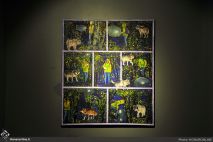


























































































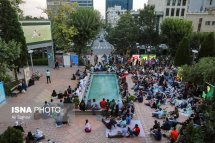








































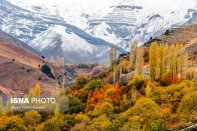














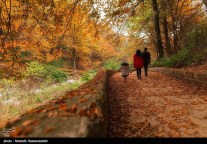




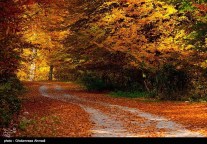



















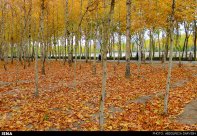





















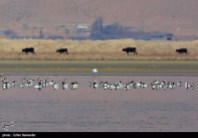
























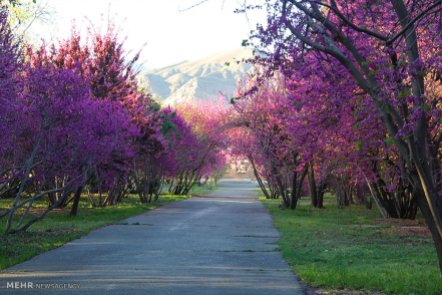









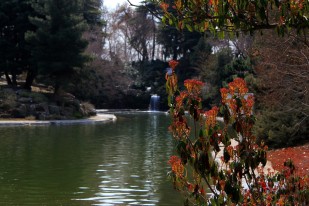


















![V[!]ROLLURGY, #fake news and fake science by Mamali Shafahi Mohsen Gallery, Tehran, May 2017. Photo credit Sharareh Samei, Honar Online](https://theotheriran.files.wordpress.com/2017/05/mamali-shafahi-vrollurgy-fake-news-and-fake-science-may-2017-01-photo-credit-sharareh-samei-honar-online.jpg?w=204&resize=204%2C115&h=115#038;h=115)
![V[!]ROLLURGY, #fake news and fake science by Mamali Shafahi Mohsen Gallery, Tehran, May 2017. Photo credit Sharareh Samei, Honar Online](https://theotheriran.files.wordpress.com/2017/05/mamali-shafahi-vrollurgy-fake-news-and-fake-science-may-2017-03-photo-credit-sharareh-samei-honar-online.jpg?w=204&resize=204%2C115&h=115#038;h=115)









